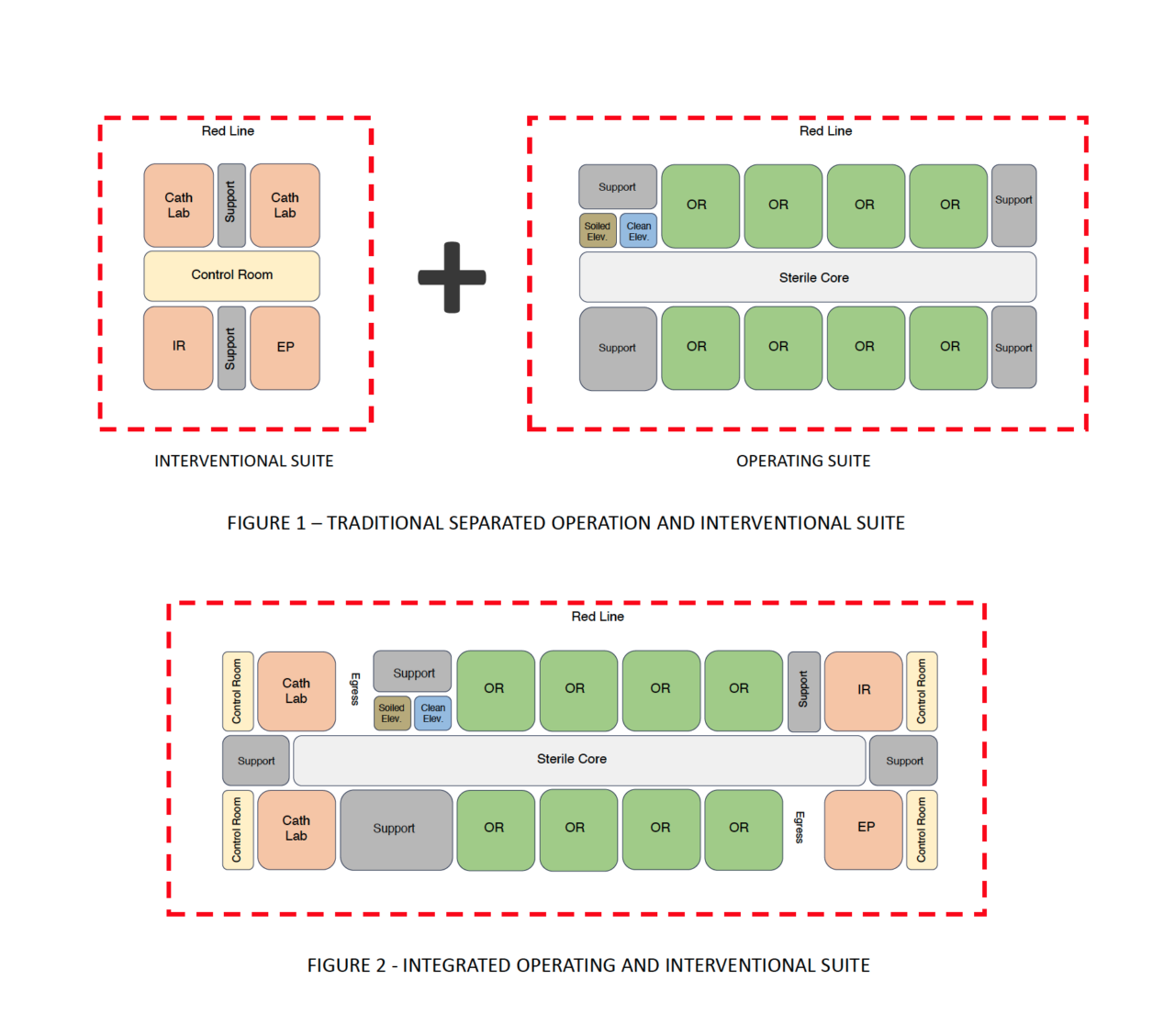In the dynamic landscape of healthcare, the imperative to achieve optimal patient outcomes while maximizing resource efficiency has led to a critical focus on innovation. A pivotal strategy for significantly enhancing operational efficiency and patient care during renovation or alteration projects is the implementation of multi-phasing plans. These plans represent a visionary approach that aims to unite two essential pillars of medical care: surgical and interventional platforms. A consolidated powerhouse emerges by seamlessly integrating these traditionally distinct domains, holding the potential for unparalleled synergy. This integrated approach promises to elevate patient care and charts a course toward improved cost-effectiveness. It also fosters a collaborative learning environment within healthcare organizations. This article serves as the second installment in a two-part series on the evolution of operating rooms (ORs), with part one focusing specifically on new construction.
Continuous improvement and innovation are paramount. One such innovative approach that holds the potential to significantly enhance operational efficiency and patient care during renovation or alteration projects is the implementation of multi-phasing plans. These plans represent a strategic solution to mitigate operational disruptions and minimize inconveniences for healthcare practitioners and patients during construction.
Incorporating multi-phasing plans involves a meticulous and well-coordinated process that optimizes the execution of renovation or alteration projects in a phased manner. This approach ensures that healthcare facilities can continue to provide uninterrupted services while enhancements are made to existing spaces. Multi-phasing plans are especially crucial when dealing with critical areas such as operating rooms (ORs), where interruptions can directly impact patient care and outcomes.
One innovative application of multi-phasing plans within the realm of healthcare facility design is the expansion of existing operating rooms into hybrid ORs. This transformation involves integrating advanced imaging equipment into OR environments, thus enabling both interventional procedures and traditional surgical operations to occur within the same space. The hybrid OR concept represents a harmonious convergence of disciplines, enabling multidisciplinary teams to address complex medical cases collaboratively.

Here are the key facets of this innovative approach:
- Seamless Integration of Disciplines: Hybrid ORs facilitate a seamless blend of interventional and surgical interventions. By co-locating these functions, healthcare practitioners from different specialties can collaborate more closely, sharing their expertise to provide comprehensive, well-rounded patient care.
- Optimal Resource Utilization: The hybrid OR model maximizes the utilization of existing spaces. This is particularly advantageous when faced with spatial limitations within the current surgical environment. The strategic combination of functions in a single room effectively addresses the challenge of constrained space.
- Enhanced Patient Outcomes: Integrating advanced imaging equipment within hybrid ORs enhances surgical precision and real-time decision-making. This improves patient outcomes, particularly in cases requiring surgical and interventional approaches.
- Efficient Workflow: The hybrid OR model streamlines patient workflows by minimizing patient transportation between different areas. This reduces the risk of complications and contributes to a more efficient use of healthcare professionals’ time.
- Reduced Construction Disruption: Incorporating multi-phasing plans mitigates construction-related disturbances, as alterations are strategically phased to avoid extensive downtime. This approach ensures that patient care can continue without interruption during renovation.
Integrating surgical and interventional platforms represents a visionary and transformative approach in today’s healthcare landscape. This consolidation offers numerous benefits, including cost savings, resource optimization, collaborative learning, and streamlined patient care. Adopting such a consolidated approach enhances operational efficiency and fosters a culture of collaboration and innovation within healthcare organizations. Furthermore, the incorporation of multi-phasing plans, particularly in developing hybrid operating rooms, demonstrates a commitment to continuous improvement in healthcare facility design. By seamlessly integrating disciplines, optimizing resource utilization, and enhancing patient outcomes, this approach exemplifies the ongoing dedication of healthcare professionals to delivering the highest standards of care, even during renovation and alteration projects.
